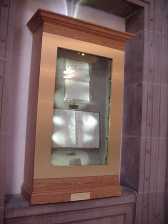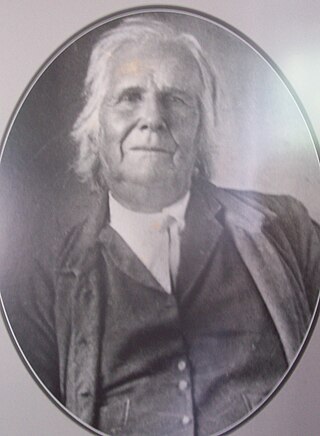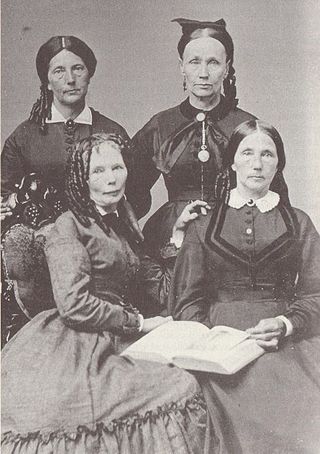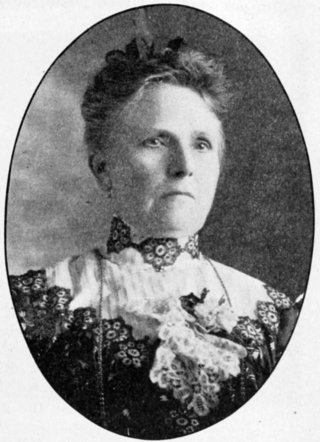
The Indiana Territory, officially the Territory of Indiana, was created by an organic act that President John Adams signed into law on May 7, 1800, to form an organized incorporated territory of the United States that existed from July 4, 1800, to December 11, 1816, when the remaining southeastern portion of the territory was admitted to the Union as the state of Indiana. The territory originally contained approximately 259,824 square miles (672,940 km2) of land, but its size was decreased when it was subdivided to create the Michigan Territory (1805) and the Illinois Territory (1809). The Indiana Territory was the first new territory created from lands of the Northwest Territory, which had been organized under the terms of the Northwest Ordinance of 1787. The territorial capital was the settlement around the old French fort of Vincennes on the Wabash River, until transferred to Corydon near the Ohio River in 1813.

Jonathan Jennings was the first governor of the State of Indiana and a nine-term congressman from Indiana. Born in either Hunterdon County, New Jersey, or Rockbridge County, Virginia, he studied law before migrating to the Indiana Territory in 1806. Jennings initially intended to practice law, but took jobs as an assistant at the federal land office at Vincennes and assistant to the clerk of the territorial legislature to support himself and pursued interests in land speculation and politics. Jennings became involved in a dispute with the territorial governor, William Henry Harrison, that soon led him to enter politics and set the tone for his early political career. In 1808 Jennings moved to the eastern part of the Indiana Territory and settled near Charlestown, in Clark County. He was elected as the Indiana Territory's delegate to the U.S. Congress by dividing the pro-Harrison supporters and running as an anti-Harrison candidate. By 1812 he was the leader of the anti-slavery and pro-statehood faction of the territorial government. Jennings and his political allies took control of the territorial assembly and dominated governmental affairs after the resignation of Governor Harrison in 1812. As a congressional delegate Jennings aided passage of the Enabling Act in 1816, which authorized the organization of Indiana's state government and state constitution. He was elected president of the Indiana constitutional convention, held in Corydon in June 1816, where he helped draft the state's first constitution. Jennings supported the effort to ban slavery in the state and favored a strong legislative branch of government.

Frances Slocum was an adopted member of the Miami people. Slocum was born into a Quaker family that migrated from Warwick, Rhode Island, in 1777 to the Wyoming Valley in Luzerne County, Pennsylvania. On November 2, 1778, when Slocum was five years old, she was captured by three Delaware warriors at the Slocum family farm in Wilkes-Barre, Pennsylvania. Slocum was raised among the Delaware in what is now Ohio and Indiana. With her marriage to Shepoconah, who later became a Miami chief, Slocum joined the Miami and took the name Maconaquah. She settled with her Miami family at Deaf Man's village along the Mississinewa River near Peru, Indiana.

Chauncey Rose was a successful American businessman of the 19th century.

The history of Indianapolis spans three centuries. Founded in 1820, the area where the city now stands was originally home to the Lenape. In 1821, a small settlement on the west fork of the White River at the mouth of Fall Creek became the county seat of Marion County, and the state capital of Indiana, effective January 1, 1825. Initially the availability of federal lands for purchase in central Indiana made it attractive to the new settlement; the first European Americans to permanently settle in the area arrived around 1819 or early 1820. In its early years, most of the new arrivals to Indianapolis were Europeans and Americans with European ancestry, but later the city attracted other ethnic groups. The city's growth was encouraged by its geographic location, 2 miles (3.2 km) northwest of the state's geographic center. In addition to its designation as a seat of government, Indianapolis's flat, fertile soil, and central location within Indiana and the Midwest, helped it become an early agricultural center. Its proximity to the White River, which provided power for the town's early mills in the 1820s and 1830s, and the arrival of the railroads, beginning in 1847, established Indianapolis as a manufacturing hub and a transportation center for freight and passenger service. An expanding network of roads, beginning with the early National Road and the Michigan Road, among other routes, connected Indianapolis to other major cities.

The Royal Australian Historical Society, formerly Australian Historical Society, is a voluntary organisation founded in Sydney, Australia in 1901 with Andrew Houison as founding president. Its goals are to encourage the study of and interest in Australian history. It has a membership throughout Australia and many of its activities and facilities are funded by contributions from its members and benefactors.

The history of human activity in Indiana, a U.S. state in the Midwest, stems back to the migratory tribes of Native Americans who inhabited Indiana as early as 8000 BC. Tribes succeeded one another in dominance for several thousand years and reached their peak of development during the period of Mississippian culture. The region entered recorded history in the 1670s, when the first Europeans came to Indiana and claimed the territory for the Kingdom of France. After France ruled for a century, it was defeated by Great Britain in the French and Indian War and ceded its territory east of the Mississippi River. Britain held the land for more than twenty years, until after its defeat in the American Revolutionary War, then ceded the entire trans-Allegheny region, including what is now Indiana, to the newly formed United States.

The Constitution of Indiana is the highest body of state law in the U.S. state of Indiana. It establishes the structure and function of the state and is based on the principles of federalism and Jacksonian democracy. Indiana's constitution is subordinate only to the U.S. Constitution and federal law. Prior to the enactment of Indiana's first state constitution and achievement of statehood in 1816, the Indiana Territory was governed by territorial law. The state's first constitution was created in 1816, after the U.S. Congress had agreed to grant statehood to the former Indiana Territory. The present-day document, which went into effect on November 1, 1851, is the state's second constitution. It supersedes Indiana's 1816 constitution and has had numerous amendments since its initial adoption.

Dennis Pennington was a farmer and a stonemason who became known for his many years in public office as an early legislator in the Indiana Territory and in Indiana's General Assembly as a representative of Harrison County, Indiana. Pennington, a member of the Whig Party, became the first speaker of the Indiana territorial legislature's lower house in 1810, served as the territory's census enumerator in 1815, and represented Harrison County as one of its five delegates to the constitutional convention of 1816. Pennington was the first speaker of the Indiana Senate, and served in the state legislature for eighteen years, which included five years in the Indiana House of Representatives and thirteen years in the Indiana Senate. His major political contributions relate to his strong opposition to slavery. Pennington ran unsuccessfully for Indiana's Lieutenant Governor in 1825. In addition to his service in the state legislature, Penning was a Harrison County sheriff and a justice of the peace, a trustee of Indiana University, and a member of the Grand Lodge of Indiana. He also supervised construction of the limestone courthouse that served as Indiana's first state capitol building in Corydon, Indiana. The historic Old Capitol, the seat of state government from 1816 to 1825, is one of his most enduring legacies. Fondly remembered as "Old Uncle Dennis" or "Father Pennington," he was known for his common sense and strong character and became one of Harrison County's most influential citizens.
During the American Civil War, Indianapolis, the state capital of Indiana, was a major base of supplies for the Union. Governor Oliver P. Morton, a major supporter of President Abraham Lincoln, quickly made Indianapolis a gathering place to organize and train troops for the Union army. The city became a major railroad hub for troop transport to Confederate lands, and therefore had military importance. Twenty-four military camps were established in the vicinity of Indianapolis. Camp Morton, the initial mustering ground to organize and train the state's Union volunteers in 1861, was designated as a major prisoner-of-war camp for captured Confederate soldiers in 1862. In addition to military camps, a state-owned arsenal was established in the city in 1861, and a federal arsenal in 1862. A Soldiers' Home and a Ladies' Home were established in Indianapolis to house and feed Union soldiers and their families as they passed through the city. Indianapolis residents also supported the Union cause by providing soldiers with food, clothing, equipment, and supplies, despite rising prices and wartime hardships, such as food and clothing shortages. Local doctors aided the sick, some area women provided nursing care, and Indianapolis City Hospital tended to wounded soldiers. Indianapolis sent an estimated 4,000 men into military service; an estimated 700 died during the war. Indianapolis's Crown Hill National Cemetery was established as one of two national military cemeteries established in Indiana in 1866.

Benjamin Parke was an American lawyer, politician, militia officer, businessman, treaty negotiator in the Indiana Territory who also served as a United States federal judge in Indiana after it attained statehood in 1816. Parke was the Indiana Territory's attorney general (1804–1808); a representative to the territory's first general assembly (1805); its first territorial delegate to the United States House of Representatives (1805–1808); one of the five Knox County delegates to the Indiana constitutional convention of 1816; and a territorial court judge (1808–1816). After Indiana attained statehood, Parke served as the first United States District Judge of the United States District Court for the District of Indiana (1817–1835).

Annapolis is an unincorporated community in Penn Township, Parke County, in the U.S. state of Indiana.

Sarah Tittle Bolton née Barrett was an American poet and women's rights activist who is considered an unofficial poet laureat of Indiana. Bolton collaborated with Robert Dale Owen during Indiana's 1850–1851 constitutional convention to include the recognition of women's property rights in the revised state constitution of 1851. Bolton was little known outside of Indiana, and her writings have been mostly forgotten. "Paddle Your Own Canoe" (1850), her most famous poem, and "Indiana," a poetic tribute to her longtime home, are among her best-known poems.
The following is a timeline of the history of the city of Indianapolis, Indiana, United States.

Delia Ann Webster was an American teacher, author, businesswoman and abolitionist in Kentucky who, with Calvin Fairbank, aided many slaves, including Lewis Hayden, his wife Harriet, and their son Joseph to escape to Ohio. She was convicted and sentenced to two years in the Kentucky State Penitentiary in Frankfort for aiding the Haydens' escape, but pardoned after two months.
Fredonia is an unincorporated community in Crawford County, Indiana, United States.

Catherine Amanda Coburn was an American pioneer of the long nineteenth century associated with the Oregon Territory. Entering the workforce after the untimely death of her husband, she became a teacher and school principal and, later, a newspaper editor. A century after her birth, she and her elder sister were described by an Oregon historian as "probably Oregon's two greatest women journalists." Coburn was active in civic life, especially in her later years. Though she did not identify as a "suffragette", she did actively support the cause of women's suffrage, among various charitable and civic causes.

Juliet Virginia Strauss was an American journalist and public speaker from Rockville, Indiana, who was a leader in efforts to generate public and state government support to establish Turkey Run State Park in Parke County, Indiana, in 1916 as Indiana's second state park. She began her journalism career as a regular newspaper columnist at the Rockville Tribune, where she wrote a daily column called "Squibs and Sayings" from 1893 until her death in 1918. From 1903 until 1918, she also wrote a weekly column for the Indianapolis News using the pseudonym of "The Country Contributor." In addition, Strauss authored "The Ideas of a Plain Country Woman," a monthly column for the Ladies' Home Journal from 1905 until 1918. A collection of her articles was published as The Ideas of a Plain Country Woman (1906). Strauss was a founder of the Woman's Press Club of Indiana in 1913, and in 1922, the group dedicated a statue in Strauss's honor at Turkey Run State Park in recognition of her effort to protect its natural beauty.

The 1822 Indiana gubernatorial election took place on August 5, 1822, under the provisions of the Constitution of Indiana. It was the third gubernatorial election in the State of Indiana. William Hendricks, the outgoing United States representative for Indiana's At-large congressional district, was elected without opposition, taking 100% of the vote. This remains the only uncontested gubernatorial election in the history of Indiana. The election took place concurrently with elections for lieutenant governor and members of the Indiana General Assembly.

The 1825 Indiana gubernatorial election took place on August 1, 1825, under the provisions of the Constitution of Indiana. It was the fourth gubernatorial election in the State of Indiana. James B. Ray, the incumbent governor following the resignation of William Hendricks, was reelected to a full term, defeating Isaac Blackford, the chief justice of the Indiana Supreme Court. The election took place concurrently with elections for lieutenant governor and members of the Indiana General Assembly.















